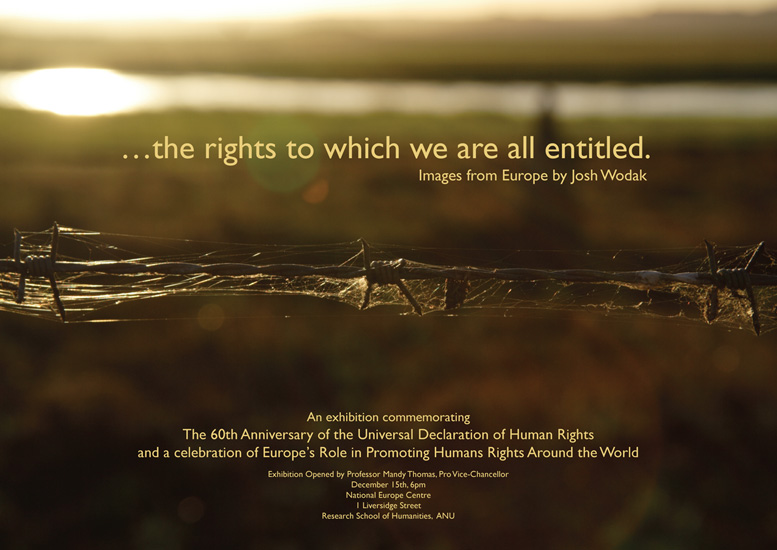
My practice explores human relationships to built and natural environments, working through documentary, conceptual and Fine Art photography.
Documentary projects in the traditions of reportage and street photography include: the Arab Spring in Syria (Semblance of Stability); environmental portraiture of Spain at the zenith of GFC (Sense of Surroundings); human ecology in the Indian Himalayas (Down to Earth Up in the Himalayas); human ecology in the Gangetic Delta (A Day in the Life of the City of Death); and commissions on human rights and policing (In Place Of People In Place); human rights in Western Europe (the rights to which we are all entitled); and the making of the Museum of Australian Democracy at Old Parliament House, Canberra (Making Me MoAD).
land/sky/waterscape studies include natural/abstract environments in Northern Australia (the idea of [(n)t+f(n)(q)]); not-so-built natural environments vs not-so-natural built environments of South Asia (ABACADABA (AKA grin reepercussions)); and climate change induced sea level rise in Oceania (Turaluralu Tuvalu).
Current work is on metaphorically mapping representations of climate change onto human (when i was a buoyant and jubilee venn diagrams?) and non-human landscapes (Facing Futures Free From Fear and shape Things To come).
Images are available for on-line and off-line publications (on request only) and to purchase as limited edition framed or unframed prints: contact josh [at] arch-angle.net
Semblance of Stability (2013-11)
In current group exhibition: 7 Feb - 30 March 2014, Casula Powerhouse, Sydney
Semblance of Stability (2013-11)
In current group exhibition: 7 Feb - 30 March 2014, Casula Powerhouse, Sydney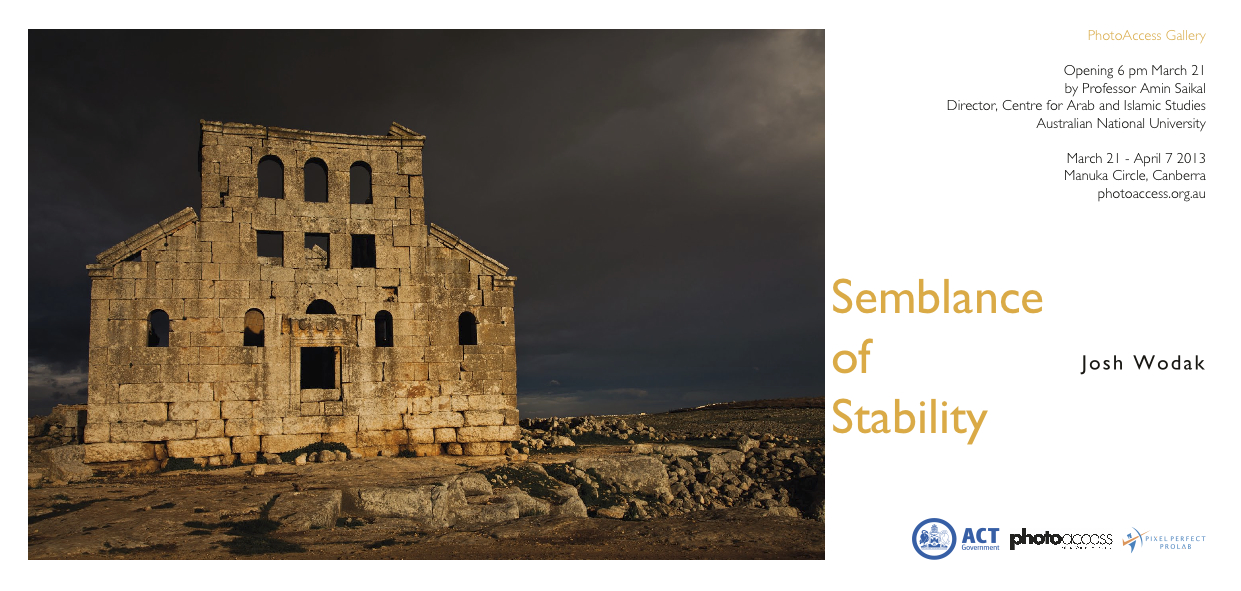
Semblance of Stability is a series of unstaged, candid documentary photographs taken across Syria in the three weeks before the first violent Government action on Syrian civilians. This reportage presents vignettes of daily life in Syria up to March 14 2011, with the Syrian uprising beginning on March 15 2011. The series offers an insight into the state of Syria immediately leading-up to the mass public airing of calls for change, during a time when desires for change were privately held en masse.
During the photographer's discussions with local people in Turkey, Syria and Egypt in the February - March 2011 period of the Arab Spring, Syria was widely regarded as (arguably) the society most open to the changes demanded across the Arab Spring. Such optimism arose partly from Bashar al-Assad's seemingly 'tolerant' response toward the necessity of granting partial reforms to the Syrian people at the time these photographs were taken. However, underlying this semblance of stability were the myriad factors that propelled Syrian civilians to risk life and limb in seeking civil rights and political reform through to the escalating humanitarian crisis.
This particular stage in the Syrian Arab Spring is explored through depicting tender moments between family members alongside moments suggestive of anxiety and unease in the calm before the storm of the Arab Spring becoming a summer storm in Syria.
All photography concerns loss, nostalgia and memory, as every photograph is a miniscule moment in time that only ever increases in distance from the present. This series draws on this lament that photography commands such power over, though it draws the focus onto the situation in Syria. As these photographs remain literally in the last moments before the Syrian uprising began, they occupy a time in history which a yearning to restore is as is returning to the time a photograph was taken in.
The exhibition has been supported by Pixel Perfect Prolab and an ACT Arts Fund Project Grant.
Catalogue, by David Chalker, Director, PhotoAccess
The United Nations estimates that 70,000 people have lost their lives since the start of the conflict in Syria in March 2011. One million refugees have fled to Iraq, Jordan, Turkey and Lebanon. Cities, homes and schools destroyed, streets deserted. Josh Wodak has packed an extraordinary amount of activity into the last few years, including a visit to Syria on the eve of the mid March 2011 events which presaged the bloody, incomprehensible atrocities that are now daily fodder for the world media.
March seems to be a significant month for Wodak. His first PhotoAccess solo exhibition, Sense of Surroundings, in March last year followed his involvement in a number of our group exhibitions in the HUW DAVIES GALLERY. We are pleased to welcome him back to the gallery with Semblance of Stability, an eerily beautiful series of images that suggest the disaster to come.
What we see here is a mirage: there are discordant elements in these seemingly peaceful pre-war images, a sense of things off balance implied by their composition, figures moving out of frame, wistful and sometimes suspicious looks into the distance, eyes downturned, children juxtaposed with bloody carcasses. As ever Josh Wodak's work challenges our emotions and provokes inspection. We are delighted to share Semblance of Stability and its strong humanist message with visitors to the HUW DAVIES GALLERY.
David Chalker
Previous solo exhibition
PhotoAccess Gallery, Canberra
Opening 6 pm Thursday 21 March
by Professor Amin Saikal
Director, Centre for Arab and Islamic Studies
Australian National University
March 21 - April 7 2013
10 am to 4 pm Tuesday to Friday
12 to 4 pm Weekends
Corner Manuka Circle and
New South Wales Crescent, Griffith
In Place of People in Place (2013)
In Place of People in Place (2013)

Human rights draw on physical and symbolic boundaries, between people, and between people and place. These boundaries are for recognising who may need protecting, and from whom, where such boundaries and how such boundaries can uphold the universality human rights amongst the local specificities of different peoples.
In Place Of People In Place explores these physical and symbolic boundaries to look at how these boundaries are established and enforced by both citizens and the State in diverse historical and contemporary contexts.
The series frames the seemingly impermeable boundaries in historical contexts of Roman prisons and the Berlin Wall against contemporary contexts where such boundaries exist in porous and contested states of protecting against the transfer of biological hazards between people through bioterrorism in post-Fukushima Japan and public space surveillance in Australia that problematises the privacy of people in public space.
Both historical boundaries of bricks and mortar, and contemporary boundaries of face masks and surveillance cameras attempt to demarcate which people may inhabit which spaces and how such people may interact with one another across the physical and symbolic boundaries which exist to 'protect' one from the other, as drawn up by the boundaries between citizen and State.
The photographs use documentary, reportage and Fine Art modes, to depict these issues through factual, illustrative and evocative forms of representation. These diverse modes are used to illuminate different facets of the contexts of the photographs, which range from Arnhem Land on the first day of the 2007 NT Intervention; citizen journalism in Syria during the 2011 Arab Spring; protests at Parliament House during the 2009 Climate Action Summit; and contemporary memorials of past conflicts between people over place, independence and sovereignty, including the Korea War in Seoul; the Siege of Barcelona; and the Martyrs' Monument in Gazientep.
In Place Of People In Place was commissioned by the Australian Research Council Centre of Excellence in Policing and Security for the 2013 Human Rights and Policing Conference. This conference commemorates the 50th anniversary of the United Nations Seminar on the Role of Police in the Protection of Human Rights, which was held at the same location in Canberra, in 1963. More information about the exhibition is available here.
Previous solo exhibition
Rex Hotel, Canberra, April 16 - 18 2013
Curated by Simon Bronitt and Melanie O'Brien.
Commissioned by the Australian Research Council Centre of Excellence in Policing and Security
jubilee venn diagrams? (2012)
And I have it all here in red, blue, green
In red, blue, green
You are my center when I spin away
Out of control on videotape, on videotape
- Thom Yorke, 02006
While weather seems tangible through our everyday sense of our immediate surroundings (such as touch, sight, smell) climate is intangibly perceived through cumulative measurement, analysis, and computation. Jubilee Venn Diagrams? interplays these seemingly tangible and intangible dimensions of climate change, through a photo- and video-portrait series of the human body animating diagrams of climate change trajectories.
To envisage climate change as visceral and embodied within the here and now of our lifetimes, the series interplays the domain of global climate (operating over eons, epochs and eras) with weather (operating at the local, here and now) by overlaying climate data on the human body (always local, always here and always now). As the bodies move through horizontal and vertical axes, they draw diagrams of climate data through the trajectories they trace: Red denotes global average temperature, Blue denotes sea level and Green denotes greenhouse gas concentration in the atmosphere.
In theme and variation on the stance of the Vitruvian man, these Cartesian diagrams draw out the evolution of the Anthropocene – wherein humans so shaped global geophysical processes that the Holocene can now be looked back on as a Past constellation of Red, Blue and Green clustered left and low on the Cartesian plane, seen from the Present: the vantage point at the centre of the screen/diagram/Virtruvian figure.
What remains to be seen is which Future trajectory we will traverse: in some portraits Red, Blue and Green remain within the scale of the human body. In other portraits, they supersede it, passing overhead. In others still, Red, Blue and Green excede the boundaries of the screen and diagram alltogether...

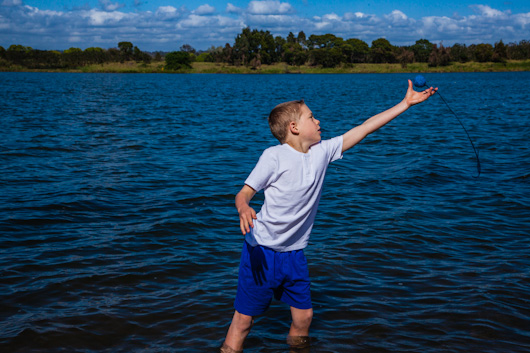
the calamity before the storm and jubilant vs jubilee
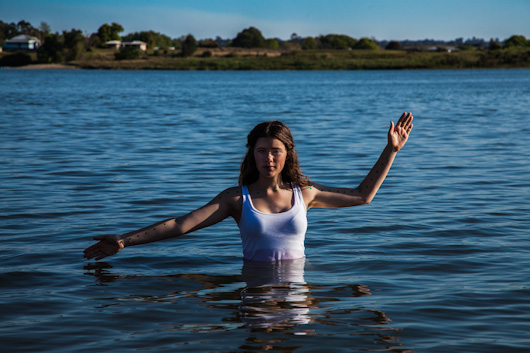

on the balance of probabilities and tangled up in blue (versus red versus green)
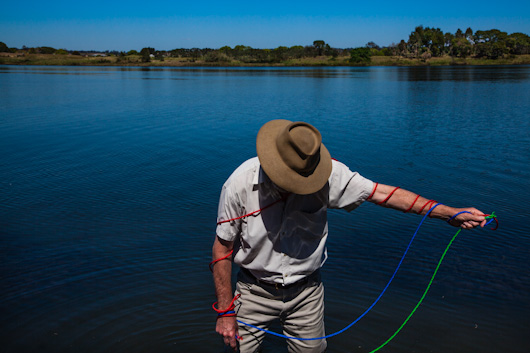
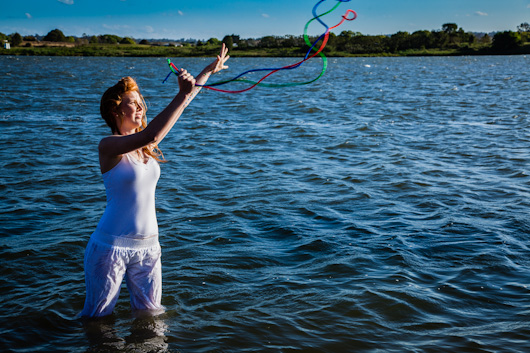
Carbon Sink and to Let it Be is to Let it Go

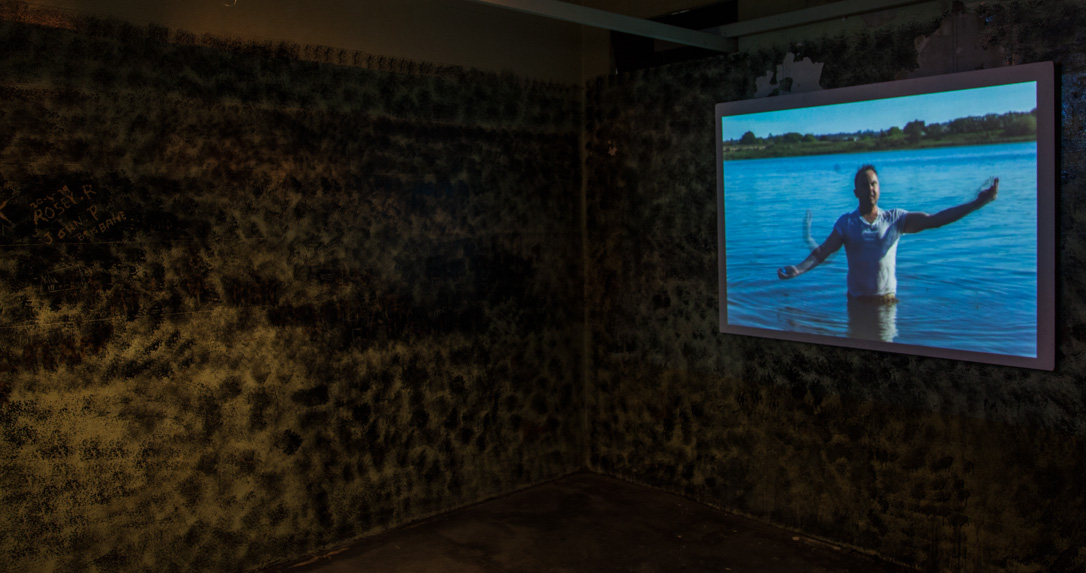
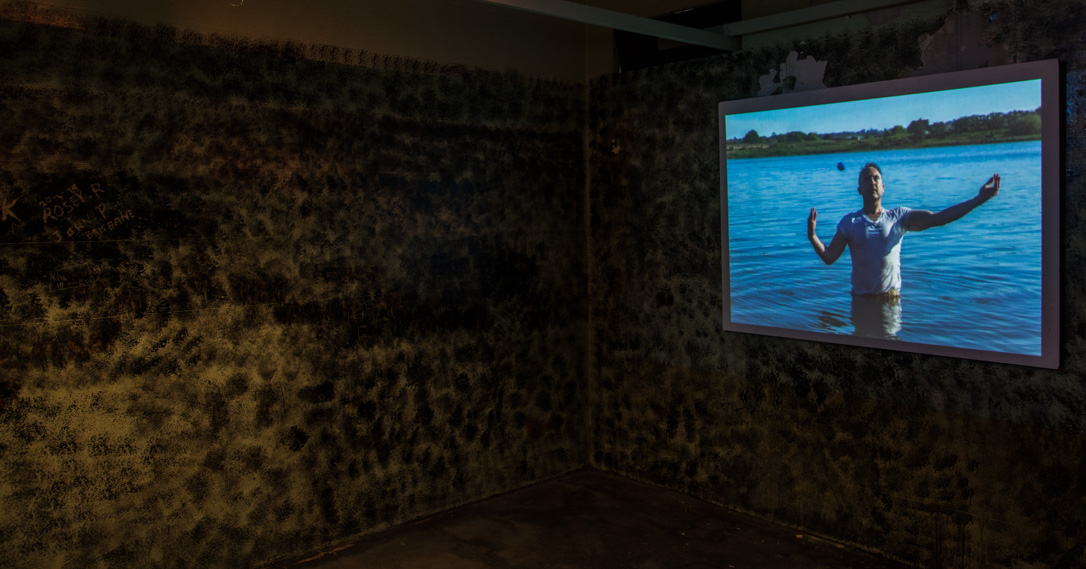
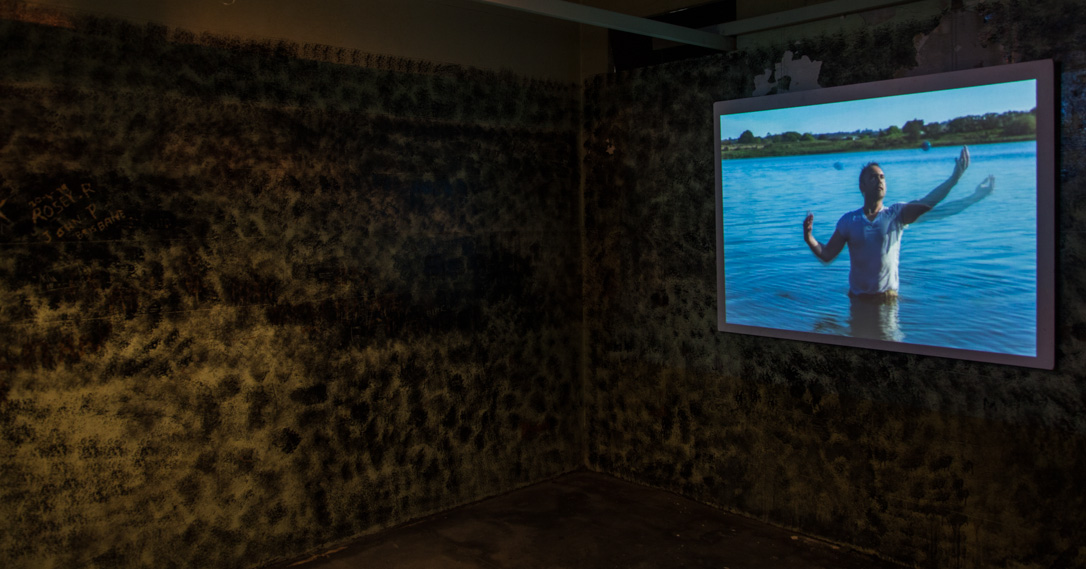
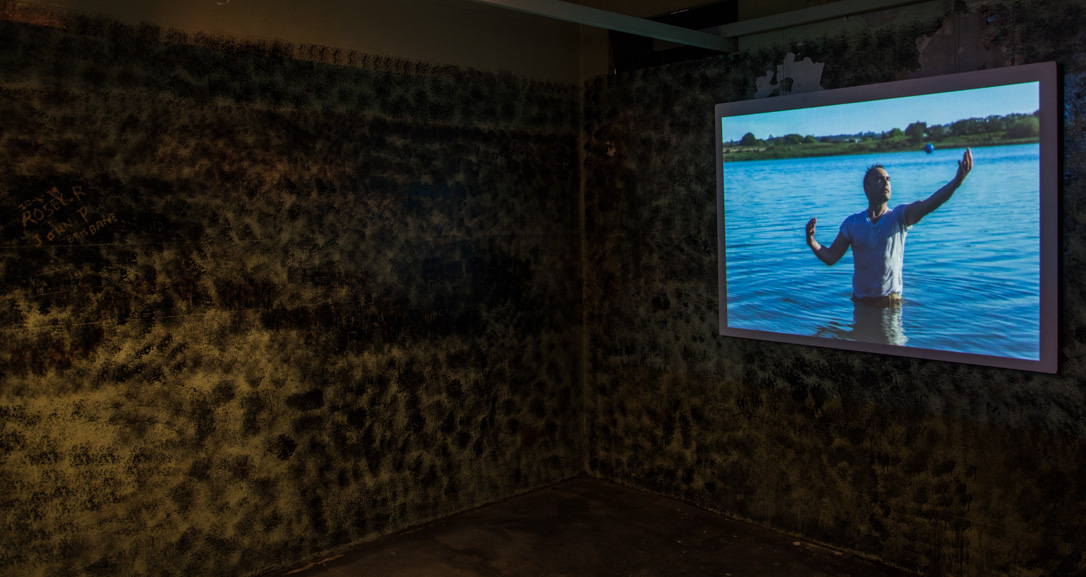
Six Degrees of Separation: Col from the series Jubilee Venn Diagrams? install views 1 - 5
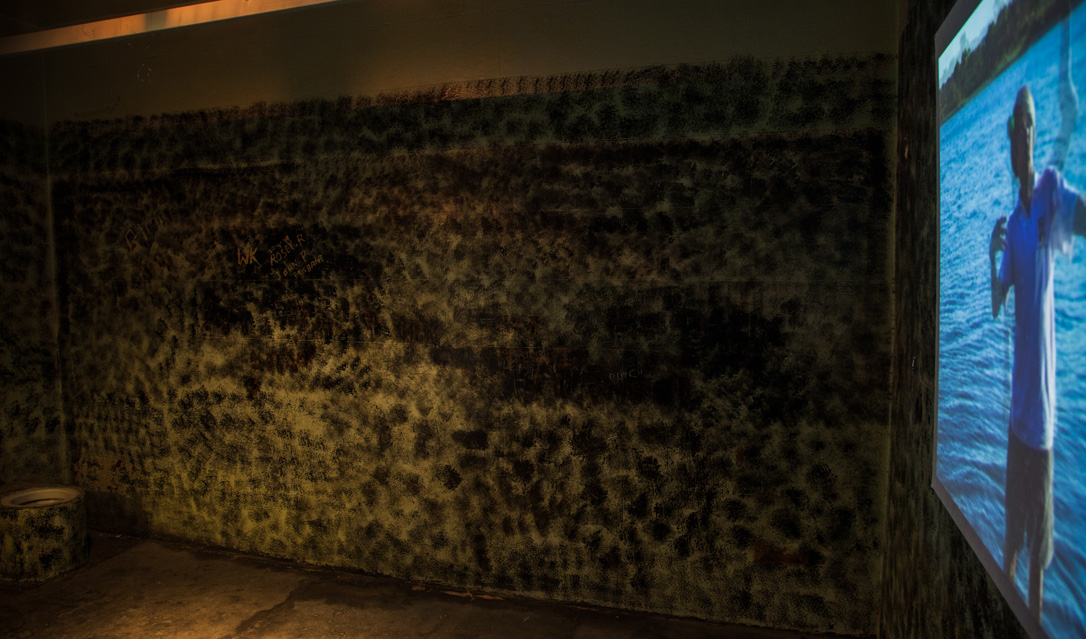
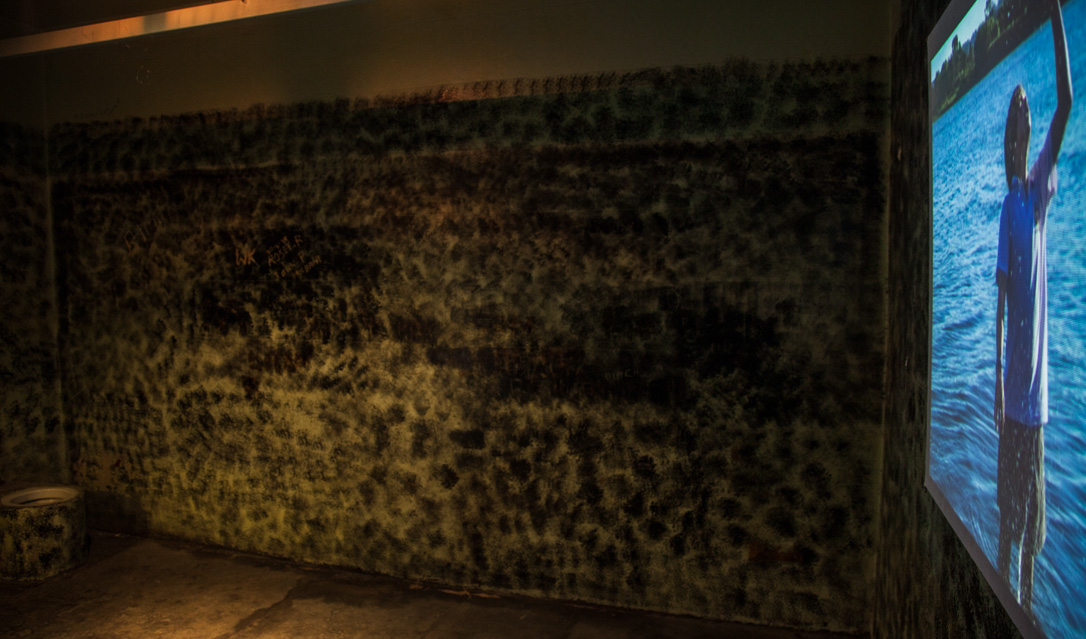
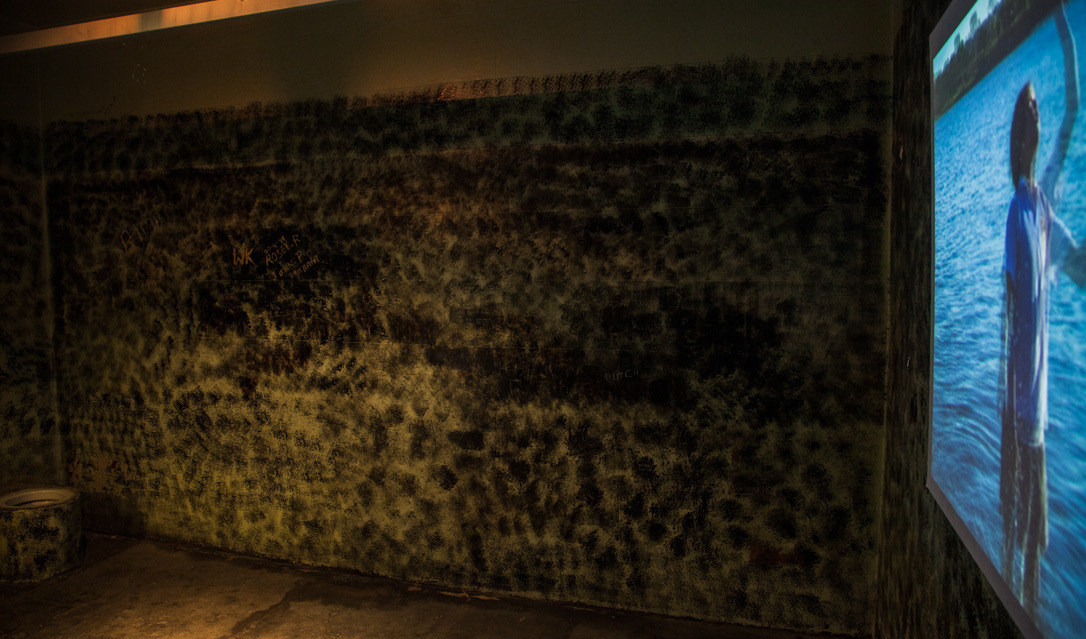
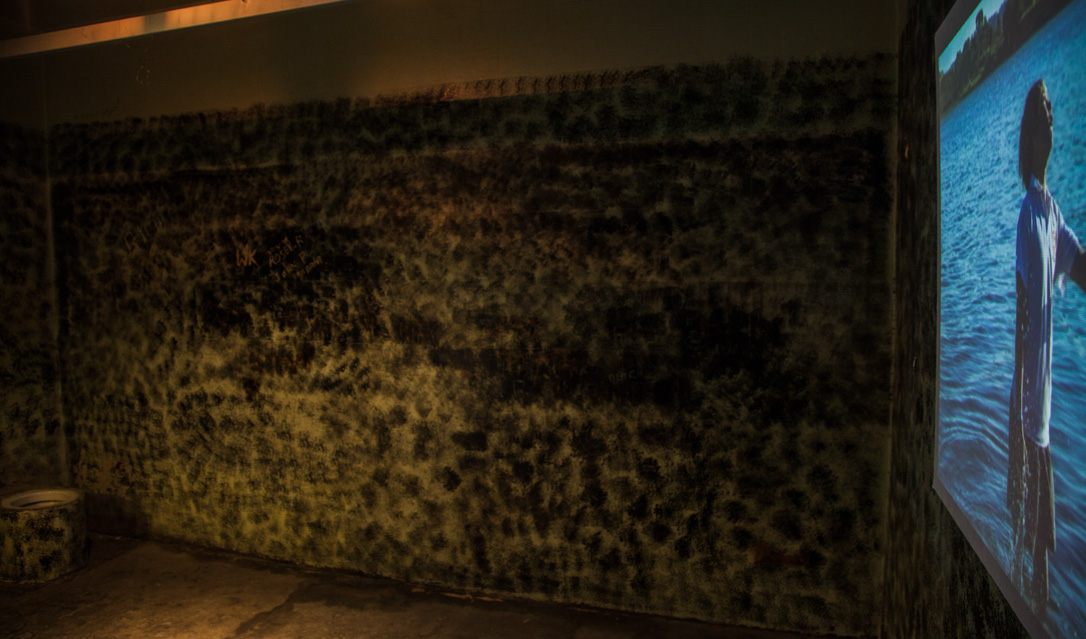
Six Degrees of Separation: Eli from the series Jubilee Venn Diagrams? install views 1 - 5
Previous group exhibition:
Perth Centre for Photography
UNCOVER Award - Finalists
Perth Centre for Photography
26 October - 6 December 2012
100 Aberdeen Street
Northbridge, Western Australia
Previous solo exhibition:
22 Nov - 8 Dec
Lock-Up Cultural Centre, Newcastle, NSW
7 Feb - 23 March 2014
Grafton Regional Gallery, Grafton, NSW
Jubilee Venn Diagrams? was produced through an Artist Residency at Grafton Regional Gallery in Grafton in Sept-Oct 2012. The Media Release from Grafton Regional Gallery about the project is avaialble here. This Artist Residency was supported by Grafton Regional Gallery, Arts NSW, Grafton Shopping World and No.1 Duke Street.

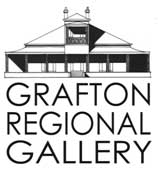

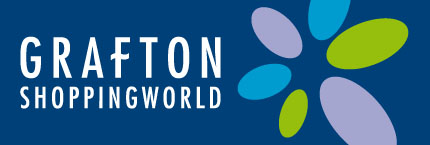
when i was a buoyant (2012)
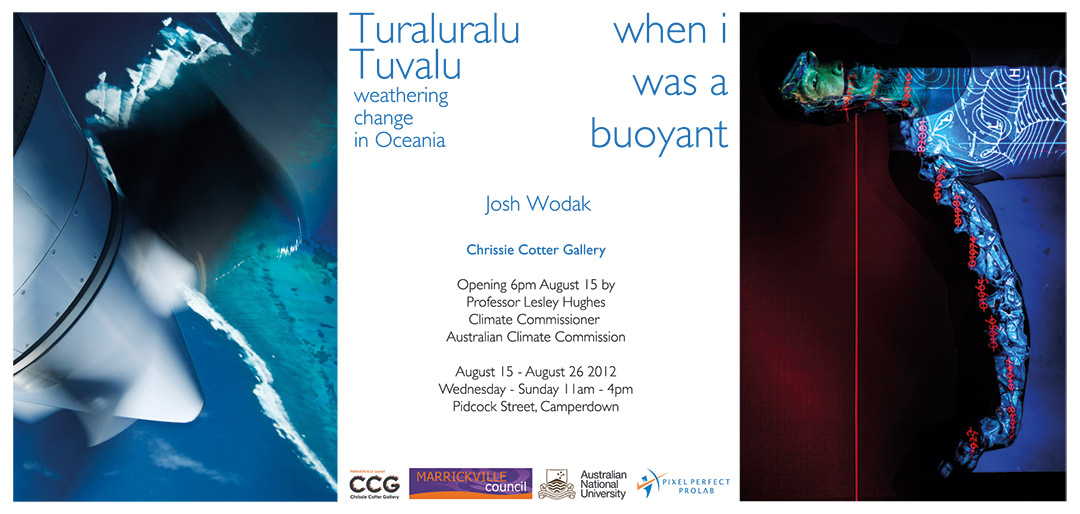

>2 degrees of separation <2028: Moira and <2 degrees of separation <2028: Moira from the series when i was a buoyant

>2 degrees of separation <2028: Akira and <2 degrees of separation <2028: Akira from the series when i was a buoyant
When I was a boy
Everything was right
Everything was right
- John Lennon, 01966
The fable of King Canute and the sea goes that in 01028 the King took his throne to the sea shore and sat in it in while he demonstrated he could command the tide to stop rising before it reached his chair. The laws of gravity with the orbit of moon and the attraction of the sun continued as they were. The tide rose. He remained stationary. His body wet. The King retreated, either into a newfound humility toward the forces of nature or in recognition of not possessing dominion over nature.
One millennium later, in 02028, asteroid 1997 XF11 will pass us by, around 2.4 times the distance between the earth and the moon. The announcement of this 1km wide asteroid in March 01998 caused widespread alarm as the initial calculations predicated a remarkably higher likelihood of collision with the earth than any others in the near future. More accurate calculations quickly followed, which asserted there was no likelihood of impact, but not before the initial trajectory stirred a public imagination in asteroid XF11 being ‘the one’ that, on the balance of probabilities, this planet is long overdue to receive.
One month later, in April 01998, a highly influential article on climate change was published. This was the ‘hockey stick’ argument, so called because the graph showed relatively rapid temperature increases since the beginning of the 20th Century, relative to the time since King Canute. The 1000 years represented by this line form a shape like a hockey stick: relatively straight for a long period of time, followed by an exponential curve upwards over a relatively small timescale. The contours of the human arm+head share this shape: stretching your arm out flat, like in King Canute’s posture toward the sea he sought to control, you look back along a relatively straight line toward your fingertips. What the eyes cannot sea as clearly is the area of near-history: the approaching vertical rise beginning at the base of the neck and travelling up along the contours of the head. This near-history area is so close to our sensors that we appear to have a blind spot for it. Blind or not, we do know the head is significantly higher than the outstretched arm as we couldn’t otherwise see so clearly down the length of the arm.
These portraits are set in the midst of this period of near-history: the year 02028. They show different sea level heights in ‘best case’ (less than 2 degrees temperature increase) and ‘worst case’ (more than 2 degrees temperature increase) scenarios over the century leading up to 02028. Their base rate is February 02010, which is one nutation of the earth before asteroid XF11 will pass by. It is within this single nutation that climate scientists are calling The Critical Decade: the period in which the tipping point for limiting increases to less than 2 degrees will or will not be breached. The base rate is taken as the base of one’s neck as this is the universal height the sea comes up to on a buoyant body. It is us, any of us, treading water two summers ago in the sea. It is a situation of being in it up to our necks, with a narrowing margin remaining for the rate of rise to not outstrip the buoyancy of the body, like an ocean wave washing overhead while ones body remains stationary.
It boils down to the difference of 2 degrees. Increases of less or more than 2 degrees are understood to be the main tolerance threshold for the physical systems which support life to continue functioning like they have in the unseasonably benign period since our civilisation emerged from its cradle. In one scenario for the future, these life support systems are maintained: our mouth and nose sit above the level of the sea. In the other, life ceases to be life as we know it…
The project was produced through an Artist Residency at Marrickville Council in July - August 2012. The Media Release from Marrickville Council about the exhibition is avaialble here.
The exhibition at Chrissie Cotter Gallery included Turaluralu Tuvalu, a series of landscape and seascape photographs concerning the effect of sea level rise on low-lying South Pacific islands. Printed by Pixel Perfect Prolab, who also sponsored the exhibition.
Previous solo exhibition:
Chrissie Cotter Gallery, Sydney
August 15 - August 26 2012
Opening 6pm Wednesday August 15
by Professor Lesley Hughes
Climate Commissioner
Australian Climate Commission
Previous group exhibition:
Light-Life: Art from Climate Science | The Muse Gallery Sydney |
Curated by Dr Lisa Roberts, September 12 - 21 2013
Earth, Wind, Fire, Water | Culture at Work |
Accelerator Gallery, Sydney September 20 - October 5 2013
Turaluralu Tuvalu (2012)

Weather and climate relate to one another as the short-term here and now that is derived from, but also cumulatively drives, the long-term then and there. Weather, seemingly tangible through our parochial immersion in our immediate surroundings, versus climate, seemingly intangible as a vast entity of intractable complexity lying beyond our reach. Or so it may have seemed in pre-anthropocene eons…
Turaluralu Tuvalu looks at the interplay between the seemingly tangible and intangible dimensions of climate change. The tangible here and right now, of trees at the shoreline which cling to shifting sands, versus the intangible there, of shapeshifting constellations of light, water and vapour playing out over the distant ocean in an all together different time scale. The series plays these spaces and times off one another as it navigates between these dimensions, to construct a view of the oscillation between tangible and intangible in the wider world.
Closer to home, the bigger picture is a bidding 'tooraloo' (goodbye) to the islands most susceptible to climate change induced sea level rise.
This exhibition was produced through an Artist Residency at the Department of Photography and Media Art at ANU School of Art in 2011. It was first shown at the ANU Pacific Institute Causes and Consequences of Environmental Transformation in the Pacific workshop in 2011.
The exhibition at Chrissie Cotter Gallery included when i was a buoyant, a community engagement project of staged solo portrait photographs depicting future sea level rise in different climate change trajectories.
Previously exhibited as solo exhibition at
Chrissie Cotter Gallery, Sydney
August 15 - August 26 2012
Opening 6pm Wednesday August 15
by Professor Lesley Hughes
Climate Commissioner,
Australian Climate Commission
11am - 4pm Wednesday to Sunday
Pidcock Street, Camperdown
School of Art Foyer Gallery, Canberra
Australian National University
May 22 - June 1 2012
Opening 6pm Tuesday May 22
by Dr Martyn Jolly, Head of Photography
and Media Arts, ANU School of Art
1030am - 5pm Tuesday to Saturday
Building 105B, School of Art
Ellery Cres, Acton
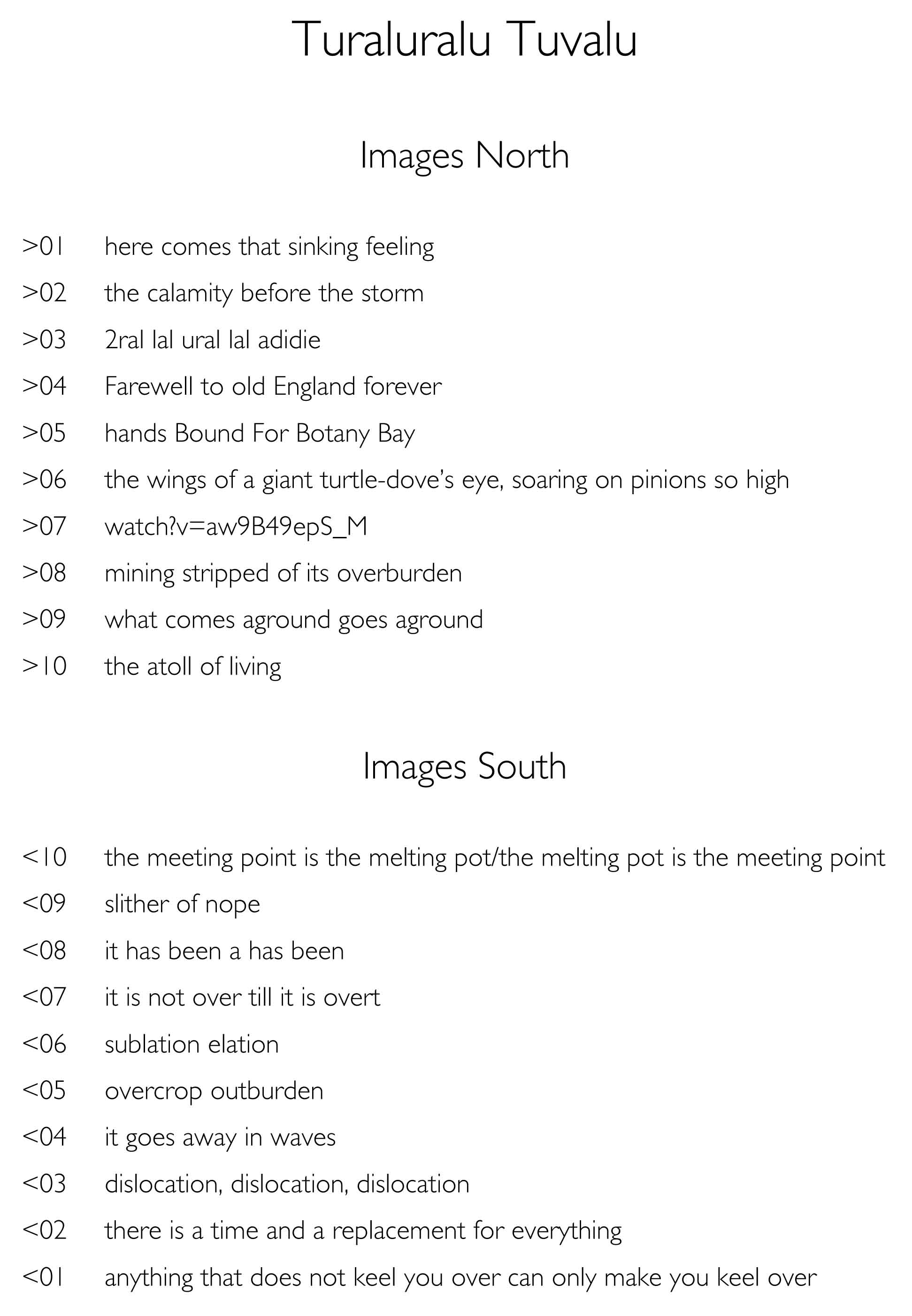
The titles of the exhibited photographs
Sense of Surroundings (2012)
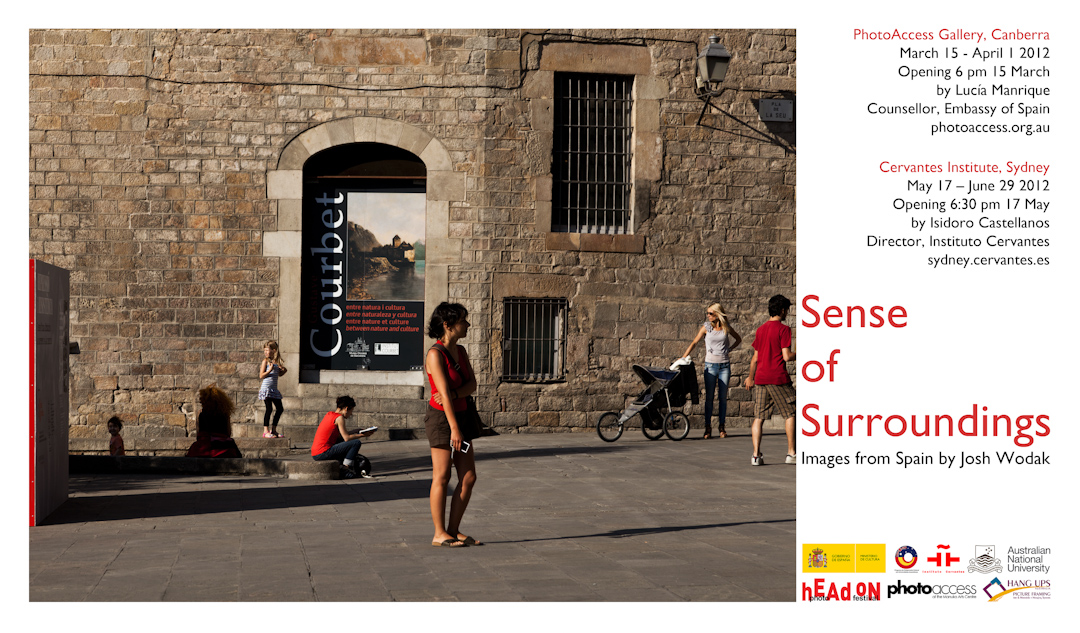
entre naturaleza et culture from the series Sense of Surroundings
Sense of Surroundings is a series of street photography and candid environmental portraiture of Spain in 2010. The suite depicts spontaneous responses to making sense of my surroundings: of cultural/physical environments and fellow humans enveloped within these surroundings. Human subjects appear to relate to their surrounding environments as seemingly small elements in the compositions, to express the relationship between infinitesimal life slices amidst the flux of the wider world.
This project has been produced by traveling to Spain in 2010, through a grant from the Spanish Cultural Cooperation Program between the Spanish Ministry of Culture and the ANU Centre for European Studies. Post-production was supported by Artist Residencies at PhotoAccess and the Department of Photography and Media Arts at ANU School of Art in 2011 and by Hang Ups Picture Framing.
Catalogue, by David Chalker, Director, PhotoAccess
Josh Wodak visited Spain in 2010 and was made a PhotoAccess artist in residence last year to develop an exhibition based on the visit. Sense of Surroundings is an important outcome of the project. In recent years he has also had residencies at the ANU School of Art and the Australian Film Television and Radio School.
Since 2009 Josh Wodak has shown always thoughtful images in a number of PhotoAccess group exhibitions in the HUW DAVIES GALLERY, but this is his first solo show with us.
Wodak's images in Sense of Surroundings achieve what most good photographers aspire to achieve, taking us to a distinct place and time, sharing something of the moment of creation. Writing about that moment Wodak says he '... sensed 'something', [but] making sense of that 'something' is ever elusive.'
This is an intriguing group of works, works that clearly have a narrative intent but contain few hints to help us read the artist's 'sense', albeit elusive, of the places and people he has chosen to show. Wodak's titles don't make the task easier. But I suspect that is the artist's purpose—to encourage us to take the time and make the effort to conjure up stories. And not necessarily the stories that might be told by Wodak himself or the unwitting players in these tableaux created with an eye sensitive to the interplay of character and place. The images are carefully and effectively composed and lit, and rich in local colour and imaginative possibilities.
The project was supported by the Spanish Cultural Cooperation Program between the Spanish Ministry of Culture and the ANU Centre for European Studies, and by Hang Ups Picture Framing. Stephen Best from Macquarie Editions printed the images. We are pleased to share Josh Wodak's Sense of Surroundings with visitors to the HUW DAVIES GALLERY.
David Chalker
Previous solo exhibition:
Cervantes Institute, Sydney
May 17 – July 01 2012
Opening 6:30 pm Thursday 17 May
by Isidoro Castellanos,
Director, Instituto Cervantes
10 am - 6 pm Monday to Thursday,
10 am - 2 pm Friday
22-24 City Road, Chippendale - 1st Floor
Part of the 2012 Head On Festival
PhotoAccess Gallery, Canberra
March 15 - April 1 2012
Opening 6 pm Thursday 15 March
by
Lucía Manrique,
Cultural Counsellor, Embassy of Spain
10 am to 4 pm Tuesday to Friday
12 to 4 pm Weekends
Corner Manuka Circle and
New South Wales Crescent, Griffith
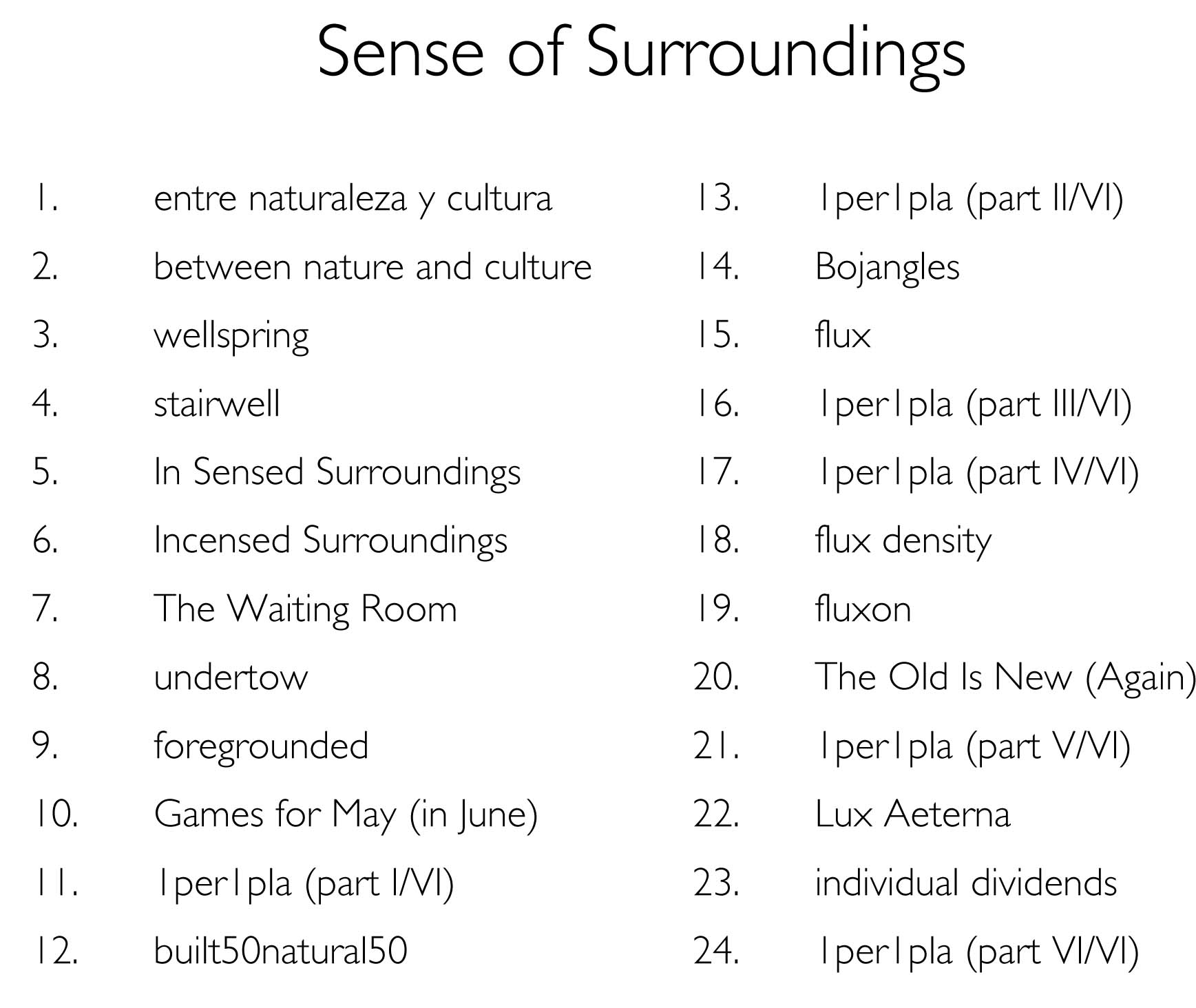
The titles of the exhibited photographs
Muswellbrook Photographic Award - Finalist Exhibition (2012)
Two photographs, Here Comes That Sinking Feeling and Here Comes That Sinking Fleeting, from Turaluralu Tuvalu were in the Muswellbrook Photographic Award - Finalist Exhibition.
Muswellbrook Regional Arts Centre
Corner Bridge and William Streets, Muswellbrook
Mar 03 - Apr 22 2012
10am – 5pm Tuesday to Friday
10am – 1pm Weekends
Press release available here
Premio Italia National Art Competition (2011)
The following triptych won second place in the Art Category of the Premio Italia National Art Competition. The photographs were taken in Italy in 2010.
More information about the competition is available here
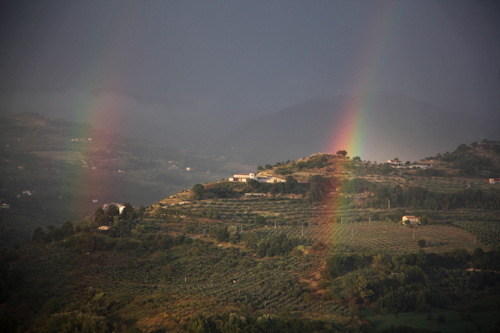

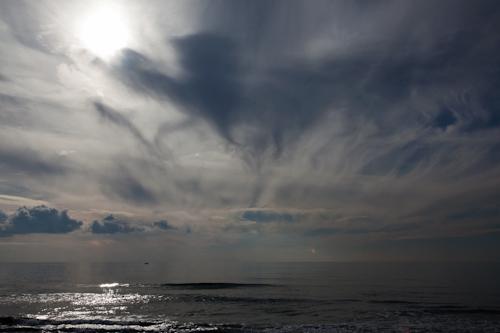
Side By Side, Onwards And Upwards and The All Clear
Royal Bank of Scotland Emerging Artist Award Exhibition (2009)
The following photograph, muddle was in the RBS Emerging Artist Award Exhibition in 2009. It was taken in London, UK.
The exhibition was curated by Susan Manford and featured works by 53 Australian artists in various media.
Exhibited at
Renzo Piano RBS Tower
88 Phillip Street, Sydney
September 21 - October 2 2009
0730 to 1900 weekdays
Press release available here
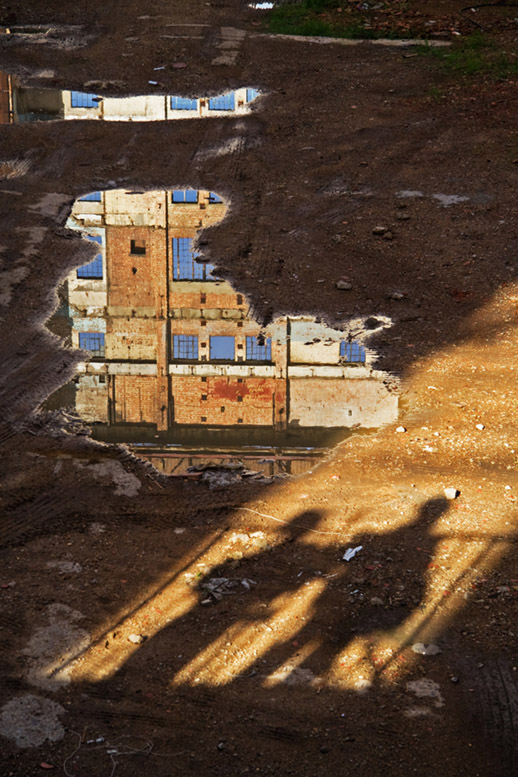
muddle (nee deep butterfried pigs don’t straighten up and fly right wing)
the idea of [(n)t+f(n)(q)] (2009)
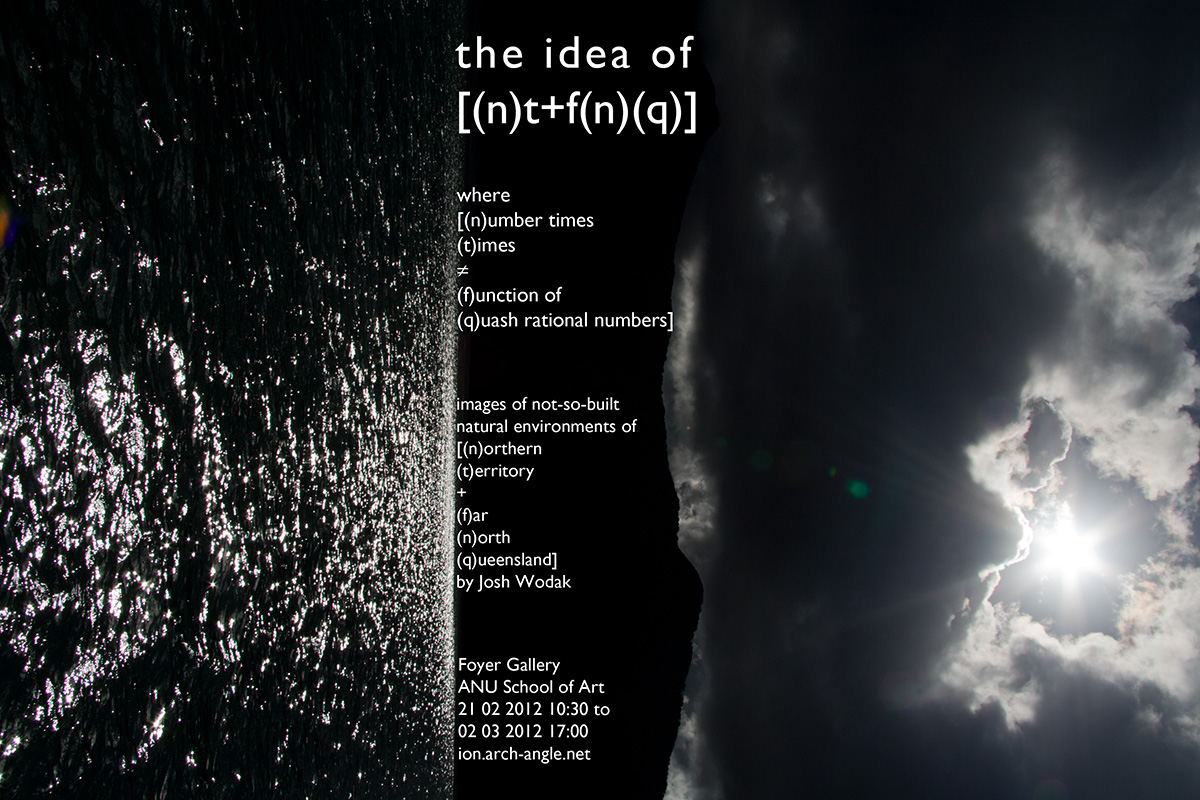
16°04'35.82"145°28'16.05":22:14.0:1/400:16.05.18:080907/the faint glimmer of hope in the haunting spectre of death
from the series the idea of [(n)t+f(n)(q)]
the idea of [(n)t+f(n)(q)] is a suite of photos of natural environments (such as trees, forests, lakes, wetlands and oceans) in the Northern Territory + Far North Queensland of Australia. Their arrangement collectively concerns metapatterns, structures and forms within nature-at-large. As these themes are implicit, rather than explicit, they are conveyed through the relationship between the exhibition title, image titles and their arrangement. The title refers to The Idea of North: Glenn Gould's contrapuntal radio documentary about individuals who live in remote+wild areas of Northern Canada. The locations of the images forms an acronym and mathematical equation, referring to The North as a physical place, and as a metaphor for solitude: [(n)orthern (t)erritory+(f)ar (n)orth (q)ueensland].
This acronym refers to the implicit themes, with the following 'equation' on the exhibition poster, stating that this 'Northern' state (of place and mind) depicted through the suite is somewhere:
where
[(n)umber times
(t)imes
≠
(f)unction of
(q)uash rational (n)umbers]
Each individual title also expresses these relationships between nature and numbers (the list of all titles is below). Part 1 of each title is the data going from place into time: i.e. Latitude+Longitude of where the photo was taken, followed by Focal Length; Aperture; Shutter Speed; Time and Date. The presentation of this meta-data in each title goes from the exact location where the objects in the photographs are, and then travels into the camera lens (i.e. Focal Length and Aperture) and then into time and beyond. The beyond is the second part of each title: the human element of language. The language component is raised, to suggest that this number is being multiplied by the power of the words.
Aesthetically, production involving no tripod/cropping/editing/tilting/image manipulation (save for tweaking brightness+contrast due to colour shifts between digital files and paper prints). This was for deliberate irony due to the purely natural subjects depicted, and also for matching the minimal production equipment with minimal post-production. The series was printed on Hahnemühle FineArt Sugar Cane inkjet paper by Stephen Best @ Macquarie Editions.
Previously exhibited as solo exhibition at
Midland Atelier, Perth
March 14 - April 15 2012
Opening 6 pm Wednesday 14 March
10am – 4pm Wednesday to Saturday
Block 2, Midland Railway Workshops, Midland
Part of the FotoFreo Photography Biennale, Open Exhibition Program
School of Art Foyer Gallery, Canberra
Australian National University
February 21 - March 2 2012
1030am - 5pm Tuesday to Saturday
Building 105B, School of Art
Ellery Cres, Acton
Photospace Gallery, Canberra
Australian National University
September 21 - October 9 2009
0900-1700 weekdays
Part of the 2009 BeginningMiddleEnd festival at ANU School of Art
The titles of the exhibited photographs
Making Me MoAD (2009)
Meandering through the making of
The Museum of Australian Democracy
Old Parliament House, Canberra
The Museum of Australian Democracy
Old Parliament House, Canberra
The series explores some pivotal contrasts surrounding the making of the Museum of Australian Democracy (MoAD) at Old Parliament House over 2008-9. Working as an Interaction Designer on the making of MoAD, while also being EDM Studios' Documentary Photographer of the entire making of MoAD, I captured contradictory celebrations and criticisms of how and why democracy exists in Australia. This series represents a slice of the distinction between my dual 'internal' perspective as an Interaction Designer working on MoAD, with my 'external' documentation of public figures and private workers during the making of.
I, Kant, believe it's not beta from the series Making Me MoAD.
Click the flyer to view the series.
…the rights to which we are all entitled (2009)
Photographs from Germany, Austria, Italy, England, Netherlands, Belgium and Switzerland
This exhibition was commissioned by The Australian National University Centre for European Studies to mark the 60th Anniversary of the Universal Declaration of Human Rights (UDHR), and also to mark the beginning of the Centre for European Studies' 2008 Summer School: 'Human Rights - Law, Policy and Practice: Lessons from Europe.'
My response was to construct a suite of impressionistic depictions of the influences of the UDHR on contemporary Western Europe, to allegorically evoke human rights in Western Europe. The exhibition explores central principles of the UDHR: embracing multiculturalism, pluralism, ethnic diversity, religious tolerance and freedom of expression. Relations between these subjects arise through the purposefully sequential arrangement in triptychs, whereby each photograph exists in consonance and dissonance within and between all seven triptychs. The entire suite is composed of interlinked cross-referenced photographs, so as to embody the content within the form of representation. This is heightened by intertextual linking between all the titles (the list of all titles is below).
Solo exhibition at ANU Centre for European Studies
1 Liversidge Street, ANU
0900-1700 weekdays from December 15 2008 – February 20 2009
Exhibition opened by Professor Mandy Thomas, ANU Pro Vice-Chancellor
t+f(n)(q)]Titles.jpg)

